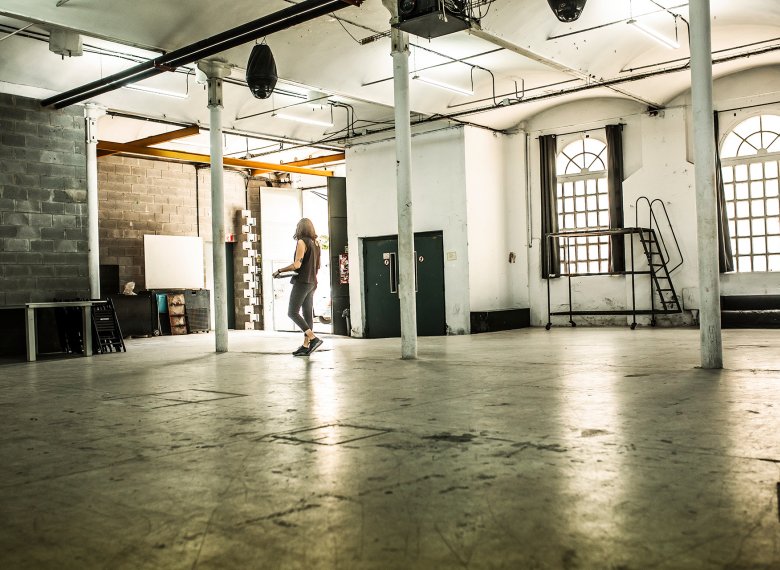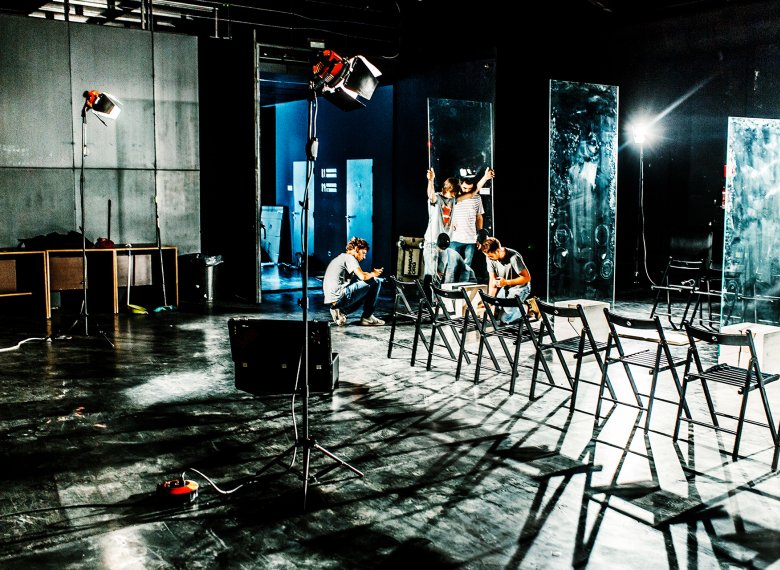Hangar





c/ Emilia Coranty, 16 (antic passatge Marquès de Sta. Isabel 40) Can Ricart
08018 Barcelona
Metro: L1 (Glòries) L2 (Bac de Roda) L4 (Poblenou)
Autobús: 7, H12, H14, V27, 192, N8, N11
Tramvia: T4 (Pere VI)
Monday to Friday. From 10:00 to 14:00 and 15:00 to 19:30
2.600 m²
Plastic arts / Visual arts / Sound arts / Multimedia arts / Free software and hardware / BioArt / Research
The Can Ricart industrial complex in the Poblenou neighbourhood is home to Hangar, an open centre devoted to artistic research and production that provides support to creators and artists.
Hangar is an open centre for artistic research and production that provides support to creators and artists. Its mission is to support creators through all stages of the visual arts production process and to contribute towards ensuring that each project achieves its full potential. For this purpose, every service Hangar provides is focused on making it easier for artists to access the materials and technical resources they require, and also providing a space for experimentation and free-flowing knowledge exchange. Its management model and public-service philosophy is focused on production and research, making Hangar a space that specialises in providing support to creators. Hangar provides a space and a set of services that make research and the development of artistic productions possible, either partially or comprehensively, while supporting results by securing their inclusion in networks and platforms or detecting opportunities for projects to be represented in other sectors.
Objectives
To promote the professional training of artists and collectives and make spaces available that facilitate the exchange of professional experiences and practical and theoretical knowledge related to artistic production and research.
To develop and promote artistic research at Hangar and position it among the top national and international centres devoted to artistic research.
To promote excellence throughout the artistic production processes that are realised at Hangar.
To respond to the burgeoning demands of artistic and cultural practice.
To actively promote awareness of Hangar, its services and its activities, both nationally and internationally.
To promote alliances between Hangar and other projects, entities and organisations that share its goals and ways of working, by following the principles of complementarity and collaboration.
To actively promote new programmes aimed at supporting the dissemination of projects by Hangar’s resident artists and collectives.
To optimise its services to effectively cater for the needs of creators and new artistic practices.
Rehearsal rooms for visual arts
- 15 individual workshops
- 1 multi-purpose workshop area
Workshops for working with materials
- Carpentry and construction workshop
- Bio-hacking workshop
Workshop rooms for audiovisual and multimedia arts
- 75 m2 interaction laboratory
- 75 m2 image laboratory
- Equipped with technical support, materials and tools related to the activity
Film set
- 150 m2 film set
- With production room and scene control booths
Changing rooms/Dressing rooms
Coworking
- 70 m² space
Classroom
Multi-purpose rooms
- A 100 m2 film set room
- A 200 m2 room
Kitchen
Resting area
Terrace or outdoor patio
Grants
Residencies
International programmes and activities
Training courses
Spaces for hire
Materials for hire
Coworking/office space
Production services
Artist archive
Archivo de artistas
Open days
Hosting of organisations, collectives and artistic projects
Hangar is a centre for artistic production and research which was founded in 1997 by the Associació d’Artistes Visuals de Catalunya. Since 2003, its legal status has been that of a private foundation called AAVC. The project has been located in an industrial warehouse within the Can Ricart factory complex in the neighbourhood of Poblenou since 1997. The construction of the Poblenou textile factory building owned by the Ricarts dates back to 1853. Architect Josep Oriol i Bernadet and his successor Josep Fontserè i Mestres designed the spaces to respond to the functional needs of the complex, resulting in a kind of urban microsystem. Can Ricart was the first major steam-powered building in Poblenou, and was part of an innovative industrial centre. In fact, this factory complex has been an innovation hub throughout the three stages of its life: first, as a textile complex; then, from the beginning of the 20th century, as an industrial complex for companies with interrelating activities, thus creating a micro industrial district; and more recently, as a focal point for the relationship between industrial production and activities from the artistic sector and the creative economy. Between 2004 and 2006, as a consequence of the gentrification of the 22@ district, most of the industries that operated from Can Ricart were displaced, which meant that the Hangar project was left as the sole inhabitant of the complex until 2016, when Taula de l’Eix Pere IV and Casal de Joves de Poblenou moved in. The remainder of the protected complex of Can Ricart falls under the management of the University of Barcelona, and is awaiting a new purpose.
Architecture project
Yaiza Alonso and Arantxa Manrique


